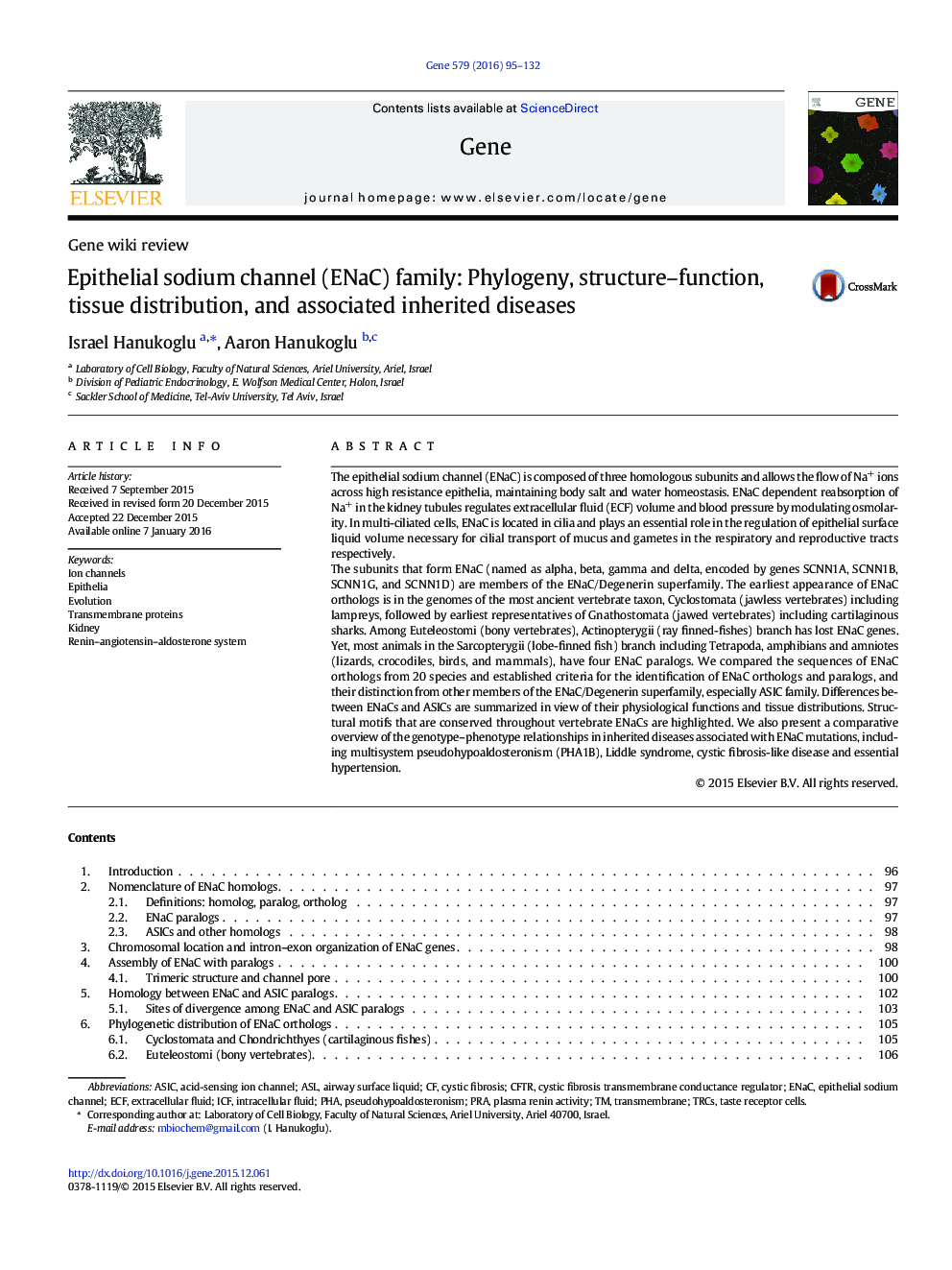| کد مقاله | کد نشریه | سال انتشار | مقاله انگلیسی | نسخه تمام متن |
|---|---|---|---|---|
| 2815186 | 1159858 | 2016 | 38 صفحه PDF | دانلود رایگان |

• A comprehensive review of the structure and function of four ENaC subunits from an evolutionary perspective.
• Comparison of the sequences of ENaC homologs and identification of structural motifs conserved throughout vertebrates.
• Establishing criteria for distinguishing ENaC family members from other families within the ENaC/Degenerin superfamily.
• Tissue-specific expression and functions of ENaC paralogs and inherited diseases associated with mutations in ENaC genes.
The epithelial sodium channel (ENaC) is composed of three homologous subunits and allows the flow of Na+ ions across high resistance epithelia, maintaining body salt and water homeostasis. ENaC dependent reabsorption of Na+ in the kidney tubules regulates extracellular fluid (ECF) volume and blood pressure by modulating osmolarity. In multi-ciliated cells, ENaC is located in cilia and plays an essential role in the regulation of epithelial surface liquid volume necessary for cilial transport of mucus and gametes in the respiratory and reproductive tracts respectively.The subunits that form ENaC (named as alpha, beta, gamma and delta, encoded by genes SCNN1A, SCNN1B, SCNN1G, and SCNN1D) are members of the ENaC/Degenerin superfamily. The earliest appearance of ENaC orthologs is in the genomes of the most ancient vertebrate taxon, Cyclostomata (jawless vertebrates) including lampreys, followed by earliest representatives of Gnathostomata (jawed vertebrates) including cartilaginous sharks. Among Euteleostomi (bony vertebrates), Actinopterygii (ray finned-fishes) branch has lost ENaC genes. Yet, most animals in the Sarcopterygii (lobe-finned fish) branch including Tetrapoda, amphibians and amniotes (lizards, crocodiles, birds, and mammals), have four ENaC paralogs. We compared the sequences of ENaC orthologs from 20 species and established criteria for the identification of ENaC orthologs and paralogs, and their distinction from other members of the ENaC/Degenerin superfamily, especially ASIC family. Differences between ENaCs and ASICs are summarized in view of their physiological functions and tissue distributions. Structural motifs that are conserved throughout vertebrate ENaCs are highlighted. We also present a comparative overview of the genotype–phenotype relationships in inherited diseases associated with ENaC mutations, including multisystem pseudohypoaldosteronism (PHA1B), Liddle syndrome, cystic fibrosis-like disease and essential hypertension.
Journal: Gene - Volume 579, Issue 2, 1 April 2016, Pages 95–132